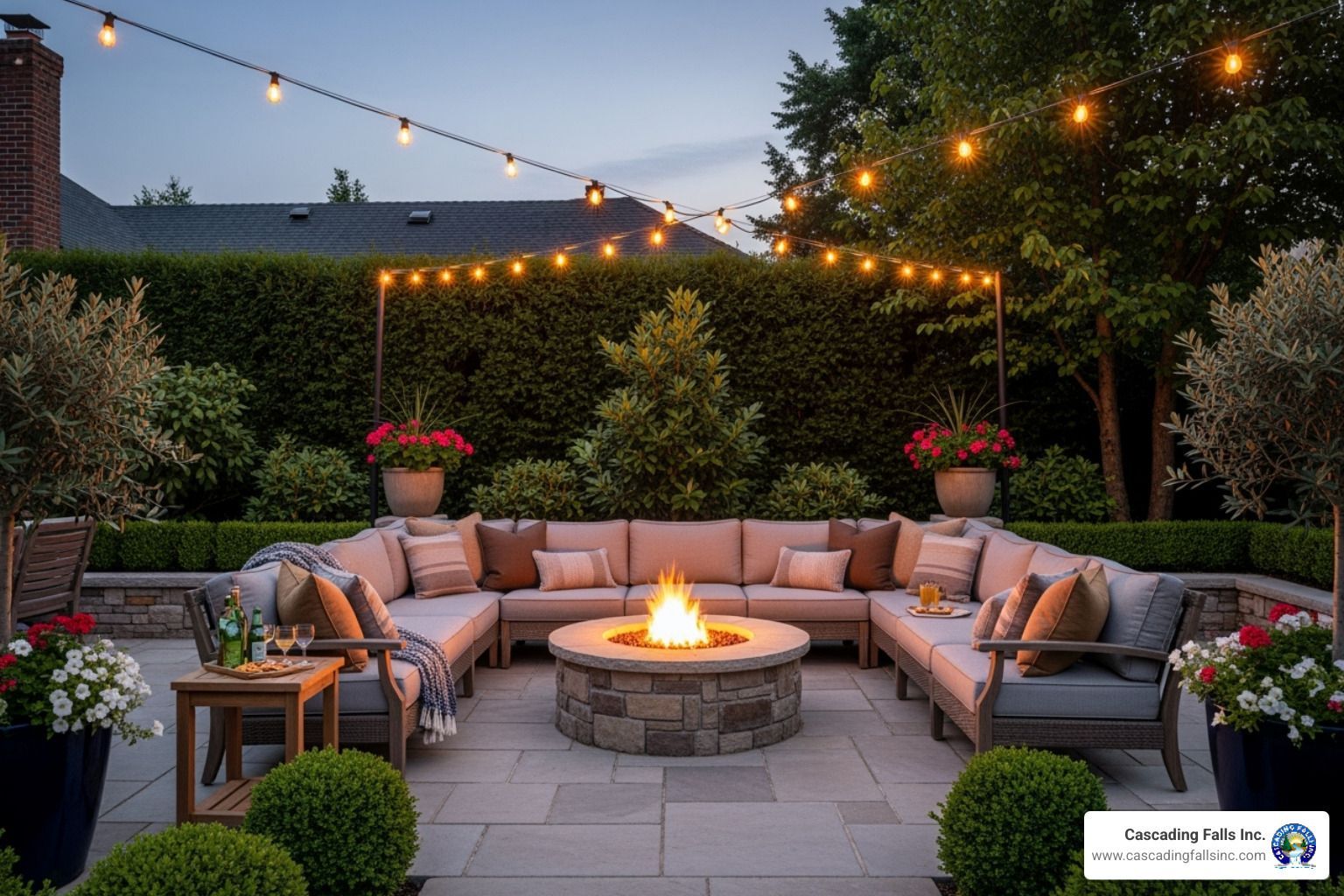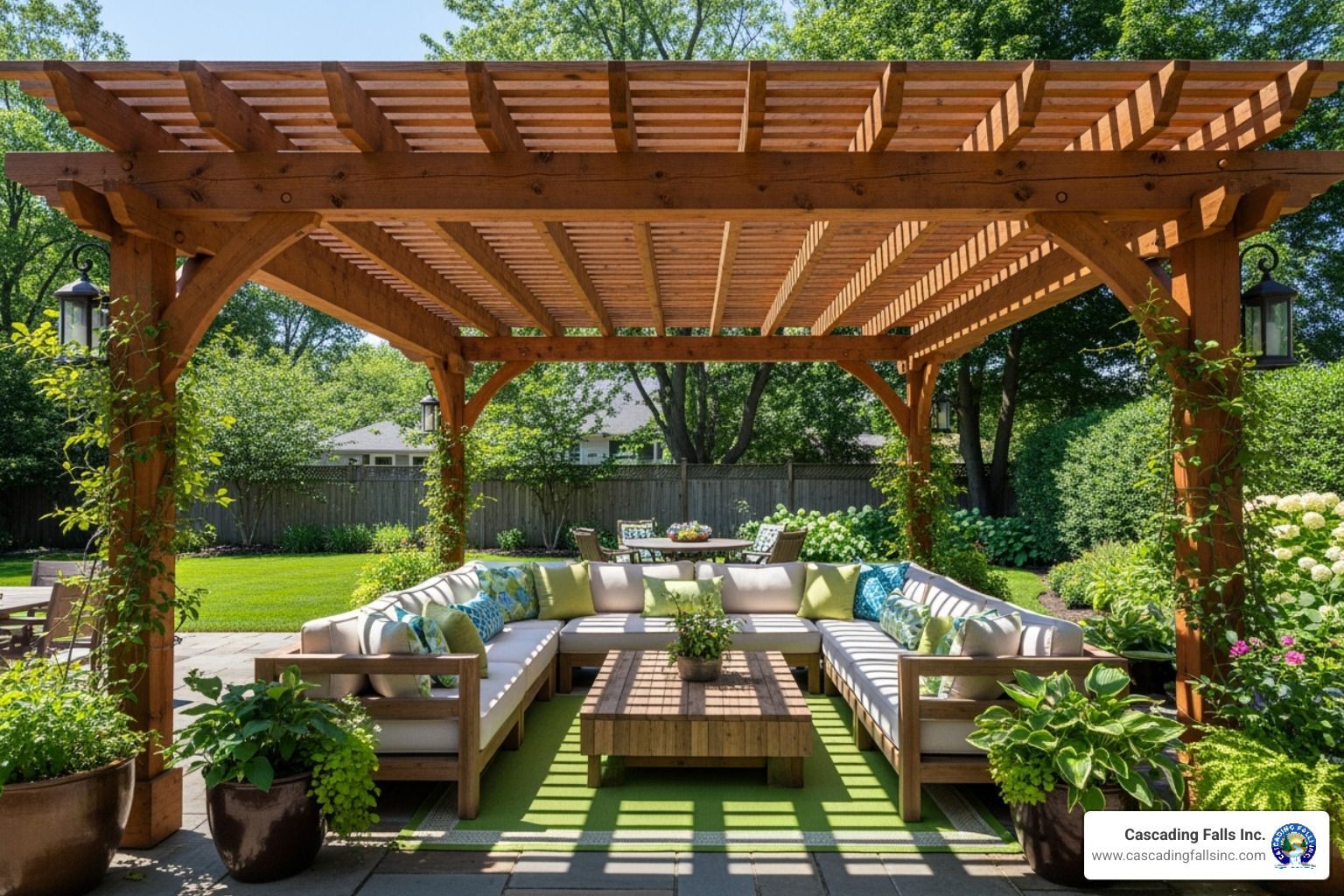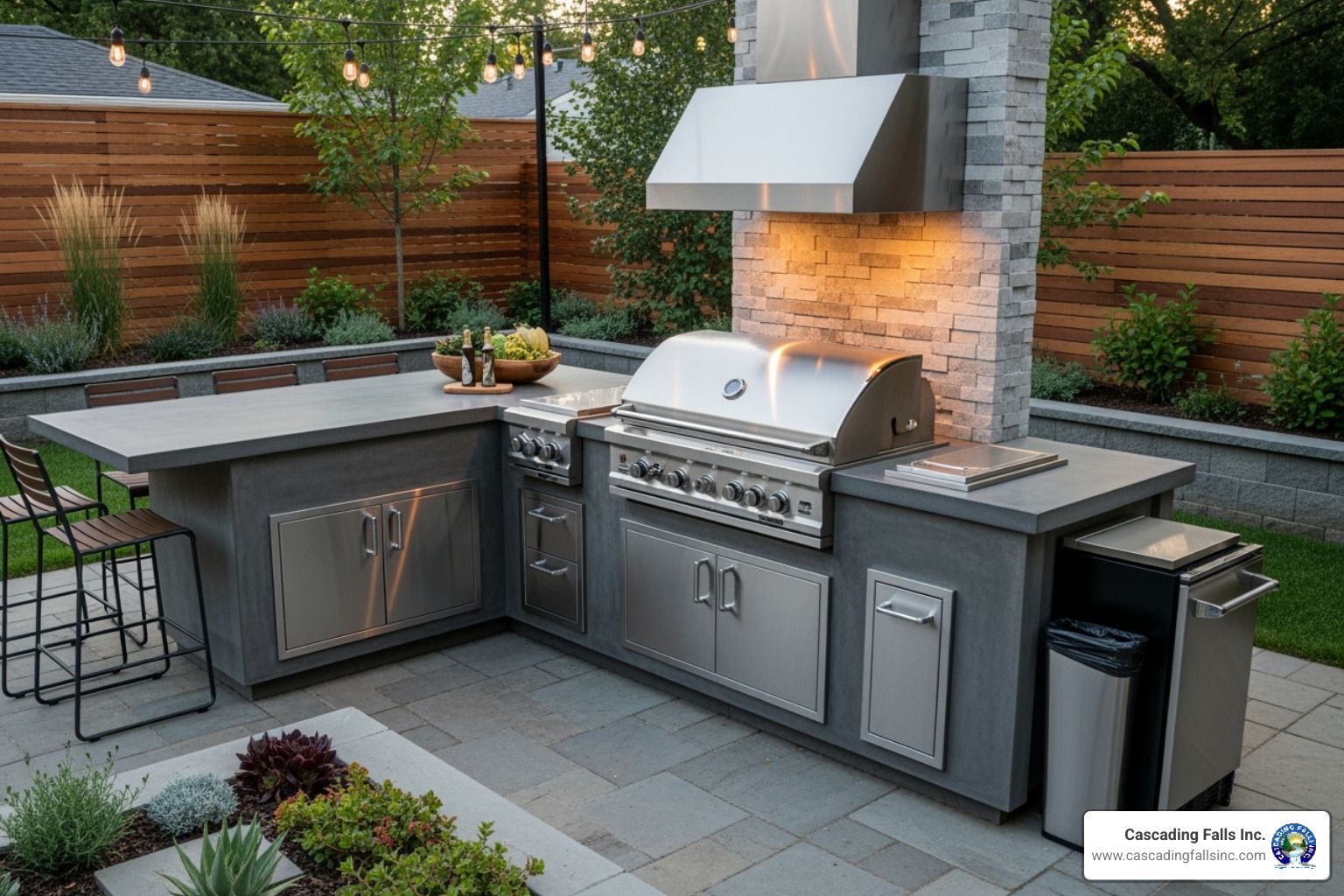Why Your Outdoor Space is Crying Out for Relief
A garden shade structure transforms unusable sun-baked patios into comfortable outdoor retreats while protecting your plants from scorching heat. When temperatures soar above 90°F, most vegetables become stressed, and your beautiful garden can quickly turn into a wilted disappointment.
Top Garden Shade Structure Benefits:
- Temperature Control- Reduces area temperature by up to 10°F
- Plant Protection- Prevents leaf scorch and improves photosynthesis
- Water Conservation- Shade cloth can reduce watering needs significantly
- Extended Growing Season- Protects plants from extreme weather conditions
- Comfortable Outdoor Living- Creates usable space during hot summer months
The good news? You have plenty of options, from simple DIY shade cloth installations costing around $140 to neat pergolas and gazebos that add serious property value. Whether you're dealing with stressed tomatoes or trying to create a comfortable patio dining area, the right shade solution can completely transform your outdoor experience.
I'm David Shellu, and with nearly two decades in landscape construction, I've designed and installed countless garden shade projects. From simple shade cloth systems to elaborate pergolas, I've seen how the right structure can save struggling gardens and create outdoor spaces families love to use.

Why Your Garden is Begging for Shade: The Core Benefits
On a scorching afternoon, have you ever seen your plants' leaves curl in distress? That's your garden pleading for relief, and a well-designed garden shade structure is the answer.
Plant health is the primary benefit. When temperatures climb above 90°F, plants struggle to survive. Leaf scorch turns foliage brown and crispy, which directly impacts photosynthesis, the process that keeps them thriving.
While plants need sunlight, their leaves perform best between 50-68°F. A shade structure maintains this optimal temperature, preventing the heat stress that causes leaves to curl. This allows plants to focus energy on growth and production instead of just survival.
During intense summer heat, water conservation is key. Shade structures slow evaporation from soil and leaves, improving soil moisture retention and reducing your watering duties. This is convenient, environmentally responsible, and good for your water bill. Consistently moist soil means happier plants and less water usage—a true win-win.
Extreme weather protection goes beyond just blocking harsh sun. A sturdy shade structure acts as a protective barrier, offering wind protection that keeps your garden intact during summer storms.
The real payoff comes with an extended growing season and increased crop yields. Most vegetables stop producing when temperatures stay above 80°F for long periods. By creating a cooler microclimate (about 10°F more comfortable), your shade structure allows heat-sensitive crops to keep producing through the hottest months.
Scientific research on shade cloths backs up what experienced gardeners have known for years – the right amount of shade can significantly boost both plant health and harvest yields.
Finally, a shade structure helps in creating usable outdoor living space. It allows you to enjoy your garden for reading or dining, even during peak summer heat, instead of just admiring it from a window. Your garden isn't just asking for shade – it's begging for the chance to thrive instead of merely survive.
From Pergolas to Pavilions: Exploring Your Shade Options
When choosing a garden shade structure, you have many options. Each type has a unique purpose, and understanding them is the first step to creating your perfect outdoor oasis.
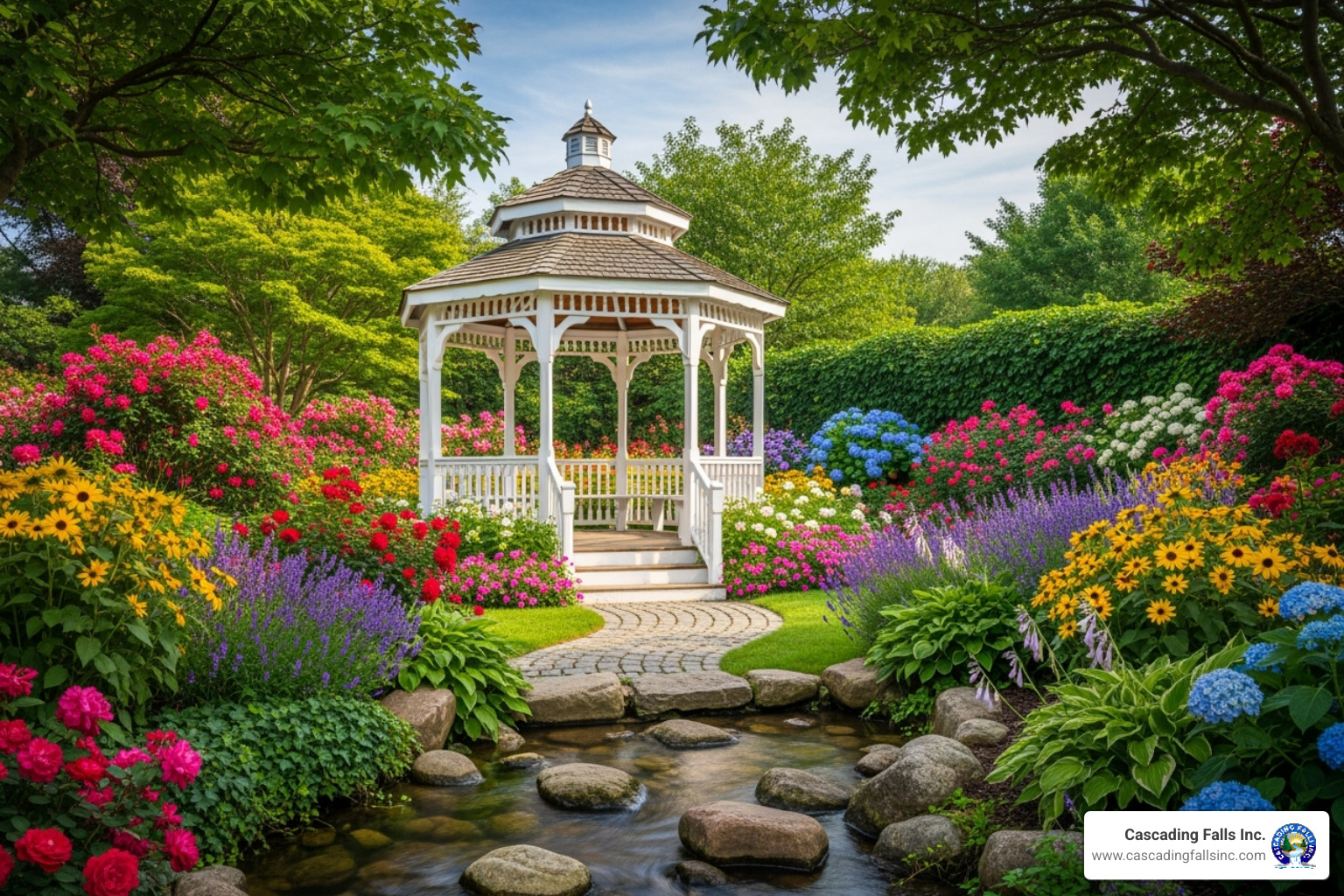
Pergolas: The Stylish Definition of Space
Pergolas create an open, airy outdoor "room." Their framework features an open roof with cross beams or slats, offering partial shade that creates a pleasant mix of sun and shadow. They are perfect for supporting climbing plants like wisteria or grapevines, which form a living canopy over time. Pergolas are ideal for defining a seating area, an outdoor dining spot, or adding architectural elegance. Here at Cascading Falls Inc., we specialize in creating custom outdoor spaces, including pergolas. Explore our landscaping services for more ideas!
Gazebos & Pavilions: The Ultimate Outdoor Shelters
For more complete shelter from sun and rain, consider gazebos and pavilions. Unlike pergolas, they have solid roofs for full protection. A pavilion acts as a large, open-sided outdoor living room with a fully covered roof. Built with sturdy materials like heavy wood timbers, they are perfect for hosting large gatherings or family dinners. A 16' x 24' Douglas Fir Pavilion, for example, can become the heart of your summer parties. Gazebos are typically smaller, freestanding structures, often in octagonal or hexagonal shapes that serve as a picturesque focal point. Their solid roofs and open (or screened) sides provide complete shade, creating a peaceful spot for quiet moments.
Comparing Pergolas, Gazebos, and Pavilions
| Structure Type | Roof Style | Shade Level | Best For |
|---|---|---|---|
| Pergola | Open, slatted | Partial | Defining outdoor rooms, supporting climbing plants, dappled shade, aesthetic appeal, intimate seating areas |
| Gazebo | Solid, enclosed | Full | Charming focal points, quiet retreats, intimate gatherings, insect protection (if screened) |
| Pavilion | Solid, open-sided | Full | Large gatherings, outdoor dining, significant weather protection, spacious lounging areas |
Shade Sails & Canopies: The Modern & Flexible Choice
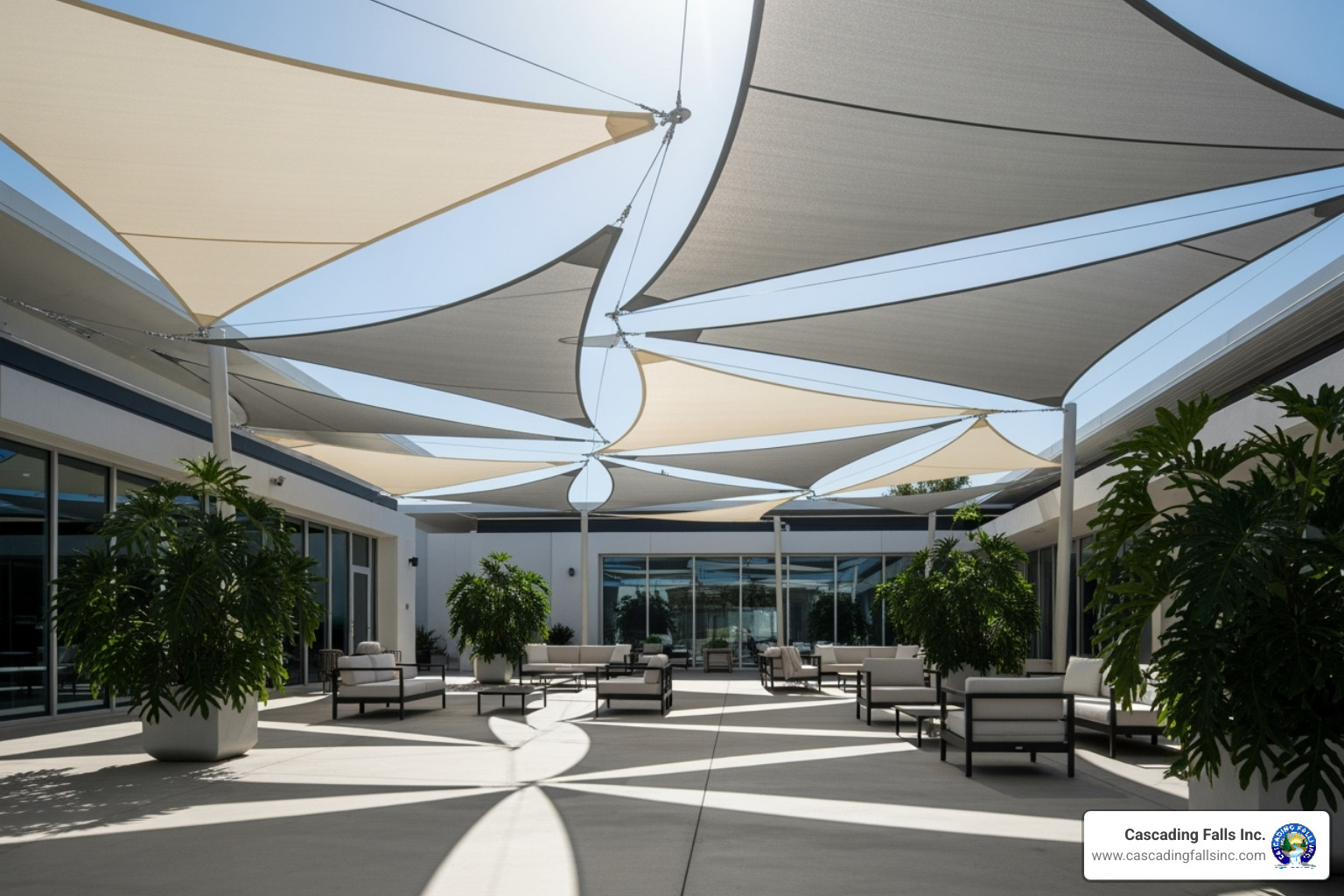
For a modern and flexible option, consider shade sails and canopies. These fabric structures are made from UV-blocking material and come in various shapes (triangles, squares) and colors, which can be layered for an artistic effect. They can be temporary or permanent, making them a budget-friendly way to add a garden shade structure without a major construction project. They are ideal for covering patios, play areas, or parts of your garden needing protection from intense sun. For best results, choose sails that block at least 90% of UV rays.
Arbours & Trellises: The Charming Garden Accents
Arbours and trellises are charming garden accents that provide minimal, dappled shade. Arbours are small, arched structures that create a lovely entryway or focal point, perfect for guiding climbing plants like roses or clematis. Trellises are flat frameworks, either freestanding or attached to a wall, that support climbing vines. Both add architectural interest and a vertical element to your garden. While not a primary shade solution, they complement larger structures and can shade a small bench.
Choosing the Perfect Garden Shade Structure for Your Needs
Deciding on the right garden shade structure is about fitting your style and purpose to make an informed decision that brings you and your garden joy for years to come.
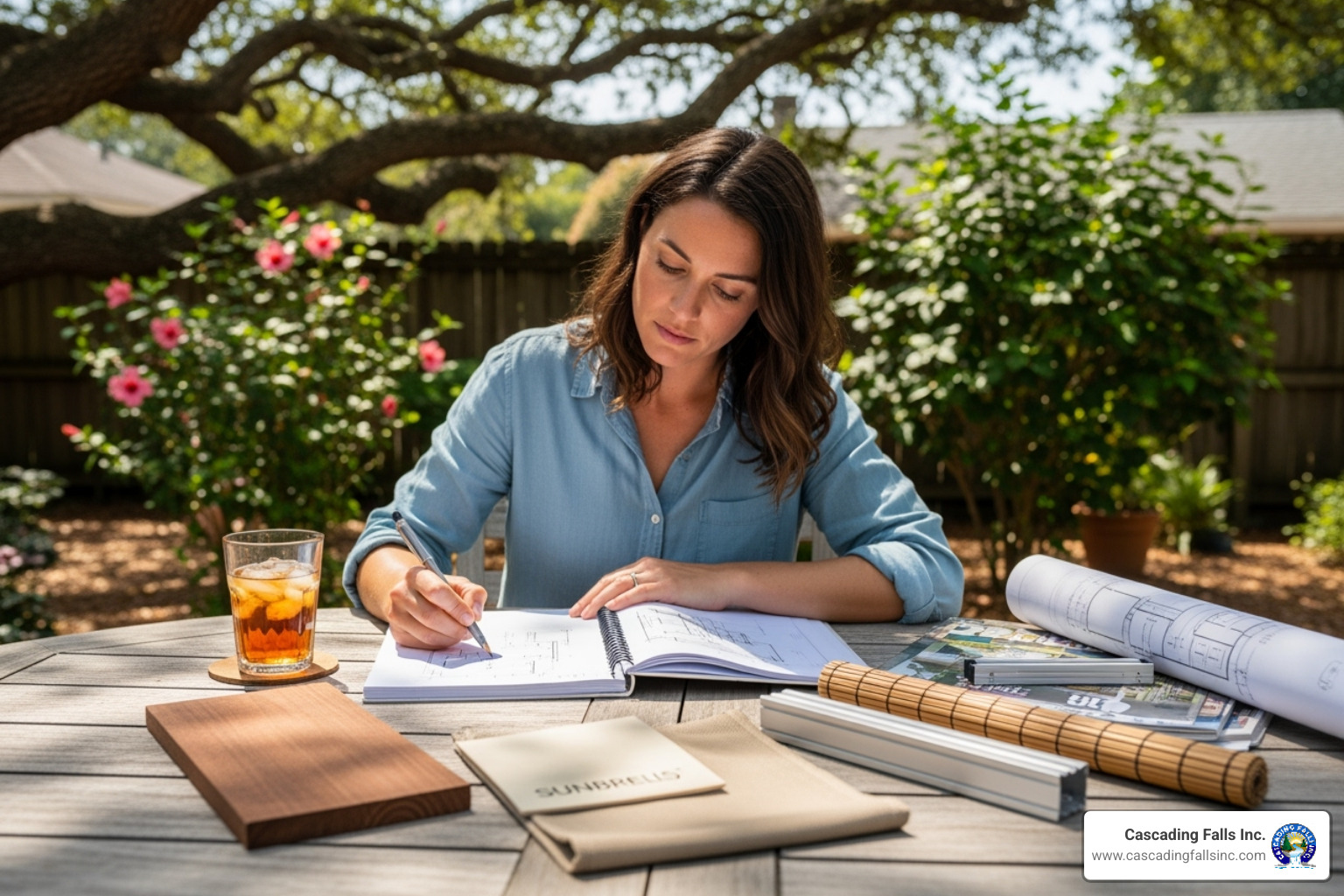
Key Factors to Consider Before You Build
Before you build, consider these crucial factors:
- Purpose and Function: What is your main goal? Are you protecting plants, creating a dining area, or adding a poolside retreat? Knowing why you need shade helps you choose the right structure. For example, a cabana offers maximum shade and privacy by a pool.
- Space Availability: Measure your backyard's dimensions to ensure your new structure fits without crowding the area. A compact pergola or shade sail might be ideal for smaller spaces, while a grand pavilion suits a sprawling yard.
- Budget Considerations: Costs can range from an affordable DIY shade cloth canopy (around $140 for materials) to a larger investment for a custom-built pergola. We can help you find a solution that balances your dreams with your wallet.
- Local Climate: In sunny areas like Roseville and Sacramento, you'll need more shade and durable materials. If your area is windy, the structure will require robust anchoring. Your climate dictates the design's durability.
- Aesthetic and Style: Your structure should complement your home's architecture and garden's vibe. The materials you choose—like Douglas Fir, pine, or steel—will define the look.
Permanent vs. Temporary: What Kind of Garden Shade Structure is Right for You?
Decide between a permanent or temporary structure. Permanent structures like pergolas, gazebos, and pavilions are long-term investments that add property value and withstand the elements. At Cascading Falls Inc., our "Whatever It Takes..." approach ensures your structure is built to last. Temporary solutions like shade sails offer flexibility for seasonal needs, such as protecting seedlings or shading a party. Your choice depends on your long-term vision, and sometimes a combination of both is ideal.
For DIY vs. professional installation, simple shade cloth setups are manageable DIY projects. However, for complex or permanent structures, professional installation is recommended. This ensures structural integrity, compliance with local building codes, and a polished finish. Our team at Cascading Falls Inc. has the experience to guarantee your project is safe, durable, and beautiful.
Natural Shade: Planting for the Future
Don't forget natural shade: planting trees is an excellent long-term solution. They provide increasing shade as they grow. We recommend native species as they are adapted to local conditions, require less maintenance, and support local wildlife. While it takes patience for a tree to mature, it can become the most effective and beautiful shade provider in your yard. For guidance, check out this helpful guide to planting trees.
The Gardener's Secret Weapon: Mastering Shade Cloth
For many gardeners battling intense summer heat, shade cloth is an indispensable tool. It acts as a sun shield for your plants, providing instant relief from scorching rays and helping them thrive when temperatures soar.
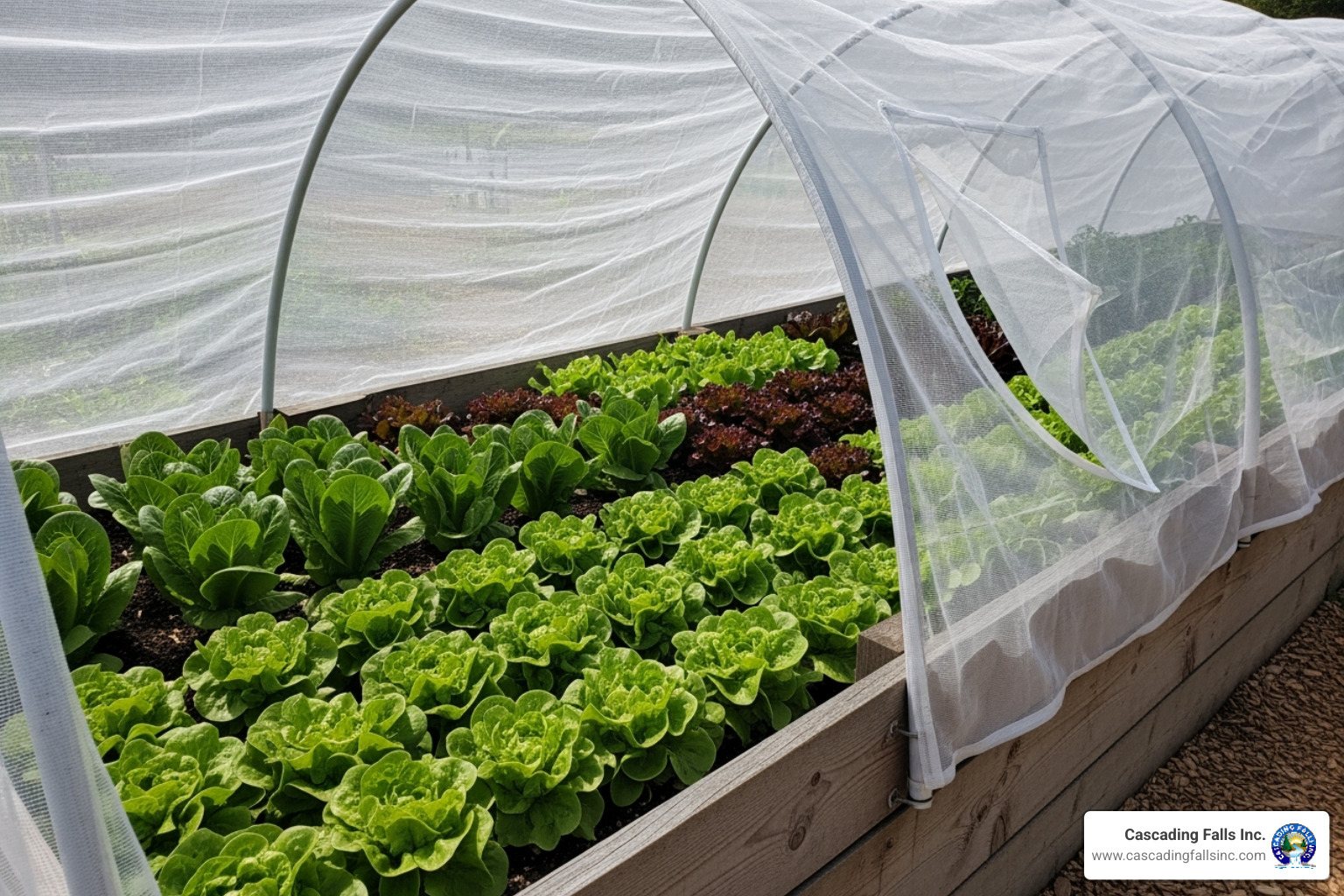
How Shade Cloth Density Affects Your Plants
Shade cloth comes in various densities, indicating the percentage of sunlight it blocks. Choosing the right one is crucial.
For most vegetables, a 30% to 50% density is perfect, allowing enough light for growth without scorching leaves. A 50% shade cloth is ideal for tomatoes, protecting them from harsh afternoon heat. For light-sensitive plants or in extreme temperatures, a 60% to 70% shade cloth may be better. Higher densities (80-90%) are typically for patios or carports.
Using the correct density ensures efficient photosynthesis and can keep the shaded area up to 10°F (6°C) cooler. This is a significant relief for plants when temperatures climb above 90°F.
DIY Garden Shade Structure: Materials and Installation Tips
Building a DIY garden shade structure with shade cloth is a rewarding, cost-effective project.
Common materials include:
- PVC pipes: Lightweight and inexpensive for temporary frames.
- Wood posts: A solid choice for semi-permanent structures; use treated lumber for durability.
- Metal poles: Galvanized steel offers maximum strength and longevity.
- Wire rope: Stainless steel wire creates a support grid to prevent sagging.
- Shade cloth: Choose the right density and look for grommets for easy attachment. White cloth is often preferred as it reflects heat.
- Connectors and fasteners: Use items like zip ties or stretchy ties to secure the frame and cloth.
For installation, set wood or metal posts in concrete footings for stability; our team at Cascading Falls Inc. can help with professional concrete services. For areas over 100 square feet, install a diagonal wire system between poles to prevent sagging. Attach the shade cloth using its grommets and fasteners like zip ties. A helpful tip is to label the corners of your cloth before seasonal storage. Most importantly, ensure good air circulation by keeping the cloth liftd above your plants, as laying it directly on them can trap heat.
Frequently Asked Questions about Garden Shade
After helping countless homeowners create their perfect outdoor retreats, we've heard just about every question imaginable about garden shade structures. Here are the answers to the most common ones.
How much cooler does a shade structure make an area?
A well-designed garden shade structure can reduce the temperature in an area by about 10°F (6°C) compared to full sun. It creates a cooler microclimate by blocking direct solar radiation, which makes a significant difference for both plant health and your family's comfort. This temperature drop can transform an unusable hot patio into a comfortable outdoor living space.
Can I build a shade structure myself?
Yes, you can. Simple structures like shade cloth canopies are great DIY projects and can be built affordably with materials like PVC pipes or wood. However, more complex projects like large pergolas or steel-framed structures often require professional installation. These larger projects involve proper anchoring, wind resistance, and potentially building permits. For safety and structural integrity, especially with projects involving concrete footings or tall structures, consider hiring professionals. Our team can handle the complex work, so you can enjoy the results stress-free.
What's the difference between a pergola and a gazebo?
The main difference is the roof. Pergolas have open, slatted roofs that provide partial, dappled shade, similar to a tree canopy. They are ideal for defining an outdoor space and supporting climbing plants. Gazebos have solid roofs that offer full protection from sun and rain, creating a sheltered outdoor room. In short: choose a pergola to soften the sun and a gazebo to block it completely. Your choice depends on whether you prioritize filtered light and openness (pergola) or full shelter (gazebo).
Transform Your Backyard into a Shady Oasis
Your garden doesn't have to suffer through another scorching summer. The right garden shade structure is a game-changer, leading to lower temperatures, healthier plants, reduced water bills, and a more usable backyard.
From a simple shade cloth setup to an neat pergola, there is a solution for every space and need, whether you're protecting heat-stressed tomatoes or creating a comfortable patio retreat. An extended growing season and a comfortable outdoor living area are just two of the many rewards.
At Cascading Falls Inc., our "Whatever It Takes..." approach means we're committed to finding the perfect shade solution for your yard, needs, and budget. We can help you plan a DIY project or design and build a custom structure that complements your home.
Your plants and family deserve relief from the heat. The only question is which solution is best for you.
Ready to give your garden the relief it's been begging for? Contact us to start planning your project and let's create a cooler, more enjoyable outdoor oasis.

